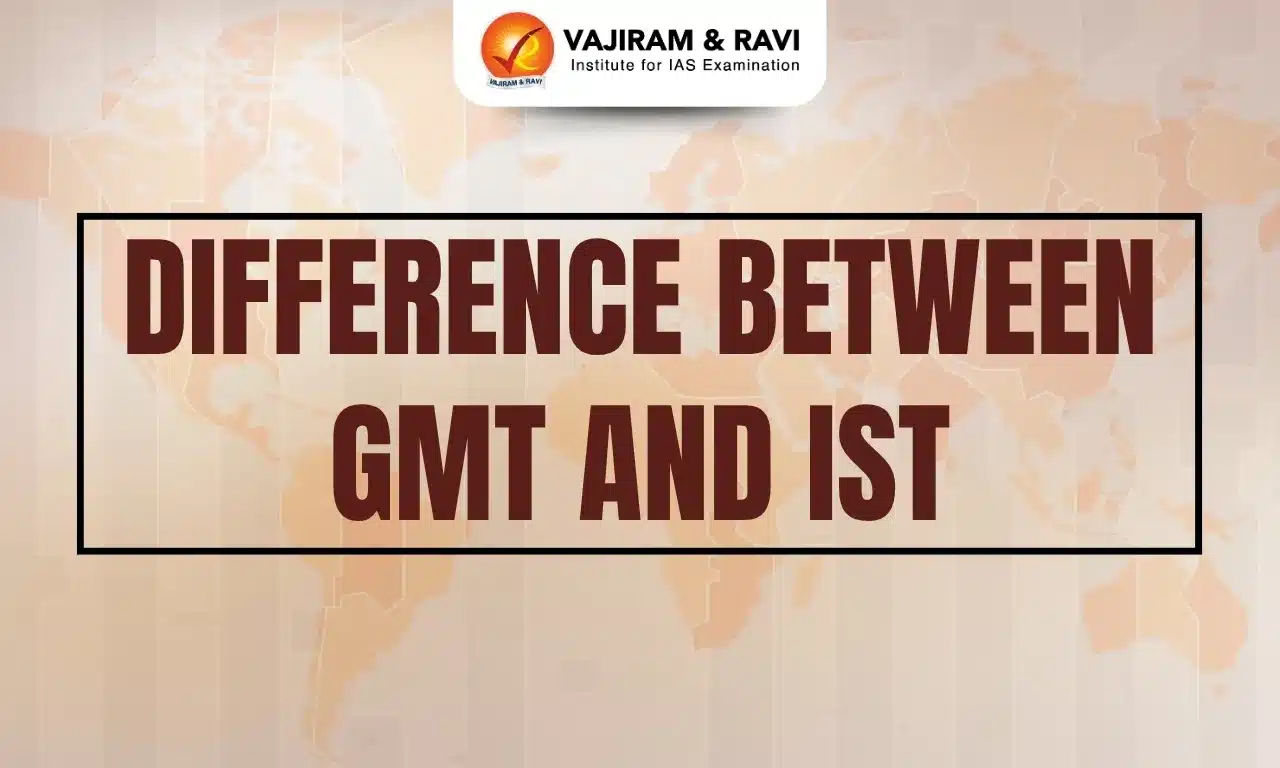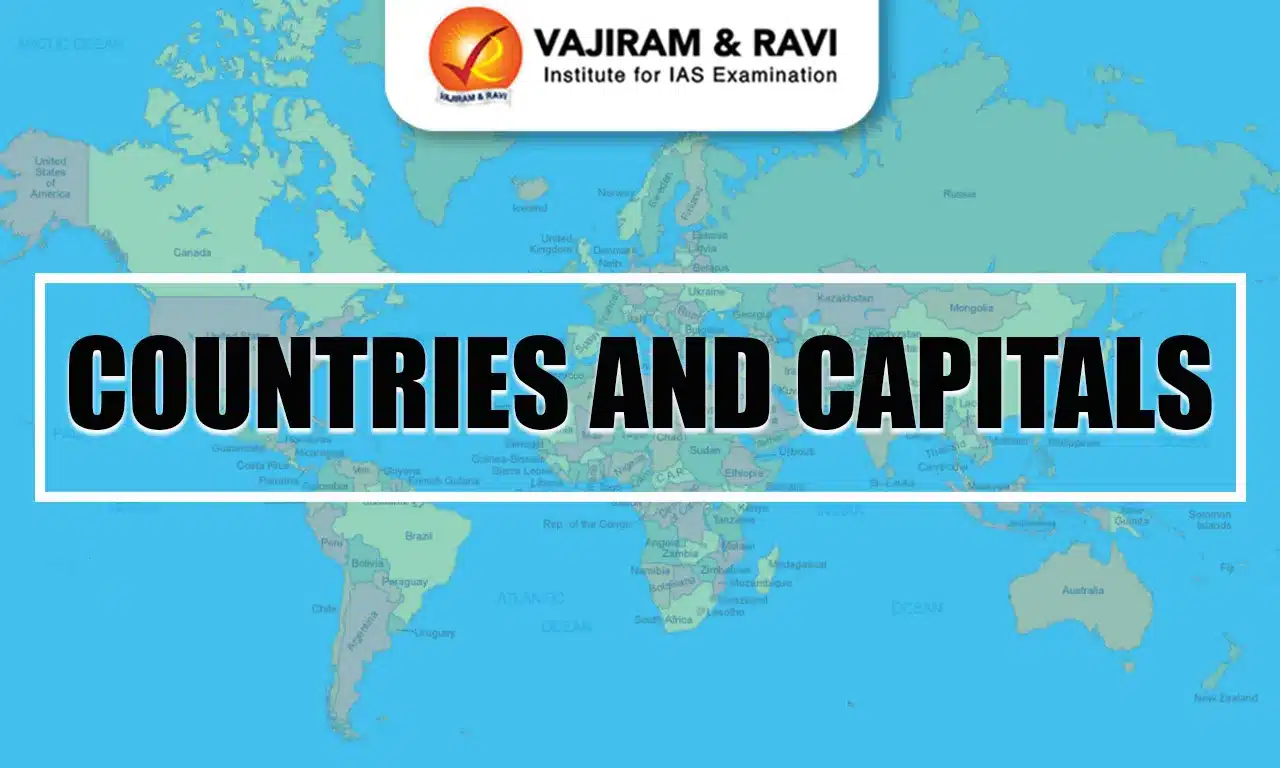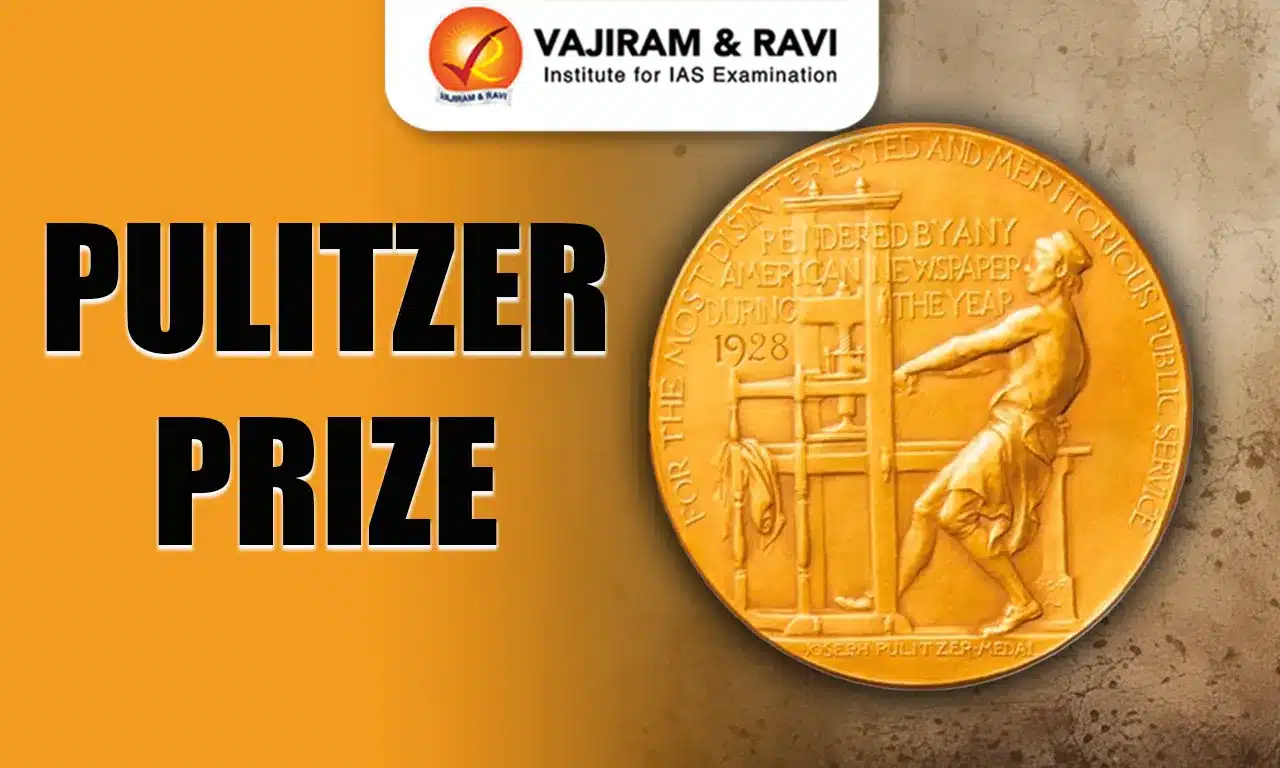GMT is the Greenwich Mean Time which is the unified time zone adopted by most of the English countries which are measured in London at midnight, whereas IST is the Indian Standard Time which is 5 hours 30 minutes ahead of GMT. This time standard is essential for various activities, including legal, social, and business purposes. There are numerous time zones across the globe, with each country or region selecting the time zone that best fits their geographical position and needs.
Understanding the Difference Between GMT and IST is crucial for UPSC aspirants, as it is a significant topic in the Geography section. This topic features majorly in both the Mains General Studies Paper-1 and the UPSC Prelims Syllabus 2025.
Difference Between GMT and IST
A time zone is a region on Earth where a consistent standard time is followed. While countries have the freedom to choose a time zone within their borders, two time zones are renowned worldwide: Indian Standard Time (IST) and Greenwich Mean Time (GMT).
| Difference Between GMT and IST | |
| GMT (Greenwich Mean Time) | IST (Indian Standard Time) |
|
The Greenwich Mean Time was created by the Royal Observatory in 1675 for assistance navigators at sea. |
The Indian Standard Time was established as the official time zone of India upon its independence on August 15th, 1947 |
|
When calculating GMT it is considered equivalent to UT1 (the modern form of mean solar time at 0° longitude), but this meaning can differ from UTC by up to 0.9 seconds. |
The IST is calculated on the basis of a clock tower in Mirzapur (with coordinates 25.15° North Latitude and 82.58° East longitude). |
|
Because of Earth’s uneven angular velocity in its elliptical orbit, GMT is rarely the exact moment the Sun crosses the Greenwich meridian |
The Time and Frequency Standards Laboratory at the National Physical Laboratory in New Delhi generates official time signals for both commercial and official purposes. These signals are derived from atomic clocks and are synchronised with the global network of clocks. |
|
Time zones are determined by a combination of legal, political, and geographical factors, meaning they do not always align perfectly with meridian lines. This also applies to Greenwich Mean Time (GMT), as discrepancies arise between the legal and geographical definitions of GMT. |
India’s single time zone, IST, doesn’t suit its vast geography. The country’s east-west stretch of 2,933 kilometres causes the sun to rise and set nearly two hours earlier in the east than in the west. To address this, the government has recently considered introducing multiple time zones. |
|
The term Greenwich Mean Time is used commonly in the United Kingdom and in the Commonwealth of Nations such as Australia, New Zealand and many other countries of the Eastern Hemisphere |
Indian Standard Time is used in India and Sri Lanka but it takes references from the UTC (Universal Time Coordinate). The UTC has been developed as a successor to the Greenwich Mean Time |
Facts About Indian Standard Time
- The Council of Scientific & Industrial Research – National Physical Laboratory (CSIR-NPL), which is responsible for maintaining Indian Standard Time (IST), has put forward a proposal suggesting the adoption of two time zones in India.
- The proposal includes IST I (UTC+5:30) for the entire country and IST II (UTC+6:30) specifically for the North-Eastern regions.
- This recommendation comes in response to the early sunrise in the easternmost parts of India, where the country’s wide longitudinal span results in significant daylight hours being lost.
- The Indian government has not supported this proposal, mentioning potential challenges and complexities involved in implementing two separate time zones.
Time Zones Importance in Geography
Time zones are essential in geography as they help synchronize human activities with Earth’s rotation and the position of the Sun. The Earth is divided into 24 time zones, each generally 15° of longitude apart, allowing for a consistent system of measuring time worldwide.
Understanding Time Zones is crucial in studying global communication, transportation, trade, and daily life patterns. It also explains regional differences in sunrise, sunset, and work hours. Time zones help avoid confusion and maintain coordination in international relations and travel schedules. They also play a role in political boundaries and economic planning.
Difference Between GMT and IST Map
Greenwich Mean Time (GMT) is the mean solar time at the Prime Meridian (0° longitude), located in Greenwich, England. It serves as the global reference point for timekeeping. In contrast, Indian Standard Time (IST) is based on 82.5° E longitude, which passes near Mirzapur, Uttar Pradesh. IST is GMT +5:30 hours, meaning India is five and a half hours ahead of GMT. Difference Between GMT and IST Map illustrating this difference would show the Prime Meridian (0°) passing through Greenwich and the IST meridian (82.5°E) passing through India.
Last updated on July, 2025
→ UPSC Notification 2025 was released on 22nd January 2025.
→ UPSC Prelims Result 2025 is out now for the CSE held on 25 May 2025.
→ UPSC Prelims Question Paper 2025 and Unofficial Prelims Answer Key 2025 are available now.
→ UPSC Calendar 2026 is released on 15th May, 2025.
→ The UPSC Vacancy 2025 were released 1129, out of which 979 were for UPSC CSE and remaining 150 are for UPSC IFoS.
→ UPSC Mains 2025 will be conducted on 22nd August 2025.
→ UPSC Prelims 2026 will be conducted on 24th May, 2026 & UPSC Mains 2026 will be conducted on 21st August 2026.
→ The UPSC Selection Process is of 3 stages-Prelims, Mains and Interview.
→ UPSC Result 2024 is released with latest UPSC Marksheet 2024. Check Now!
→ UPSC Toppers List 2024 is released now. Shakti Dubey is UPSC AIR 1 2024 Topper.
→ Also check Best IAS Coaching in Delhi
Difference Between GMT and IMT FAQs
Q1. What is the time difference between GMT and IST?+
Q2. What are the countries in the IST time zone?+
Q3. What is the Standard Meridian of India?+
Q4. Which states cross the Indian Standard Time line?+
Q5. How to convert GMT to IST?+















